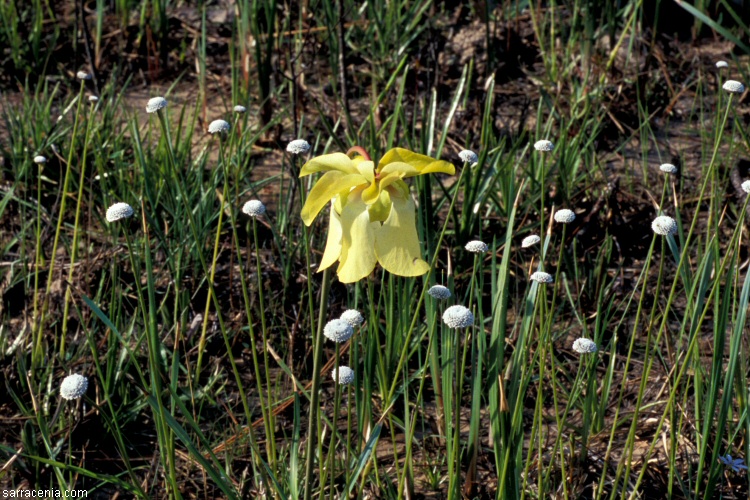
Styrofoam balls and pipe cleaners:
After I finished with the photographs of the pink flowers (which was slowed because Beth insisted on taking her own
pictures--of ME taking pictures), we trundled our gear back to the car and took a rehydration break. Beth announced
that she wanted to visit another Sarracenia field she had noted through the car window earlier in the day.
She said it looked "different" and as such might
have different species or a contrasting
habitat type. Visit another site?
TWIST MY ARM!
We drove to the next site, and I saw what she meant about the different habitat. First, instead of being
easily accessible, the savannah was barely visible through a thick
grove of young, 5 meter tall pine trees that had been killed in a recent burn--the flowering Sarracenia
were only partly visible through the blackened pine branches. Second, the Sarracenia were growing
in lusher vegetation--even from a distance and through our binoculars the whole site looked moister.
Very interesting.
Standing near the car I took a compass bearing towards the site, then reversed it 180 degrees. Yes, even with a GPS, a
compass can still come in handy. They don't run out of batteries or malfunction if dropped in water!
We walked to the fire-killed doghair forest. These dead trees provided an interesting
obstacle between us and the Sarracenia--their interlocking branches created an interlocking
fence of brittle, charcoalized twigs. There was no easy way through it, so our
only option was to push through the carbonized branches. Soon the charcoal twigs had
drawn spidery black patterns on us from hats to shins, covering us with ceremonial marks written in an
inexplicable pine tree alphabet.
I didn't think much of this lone Sarracenia flower when I first saw it,
but after about thirty paces I returned and photograph it. Why? Because
surrounded by all the little white flowers (perhaps
Eriocaulon compressum), the tableau reminded me of a little model solar system
that a child might make for a school exhibit. The Eriocaulon, by the way, was a good indicator that
this site gets a lot of water.